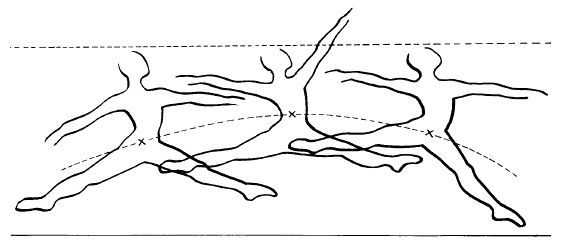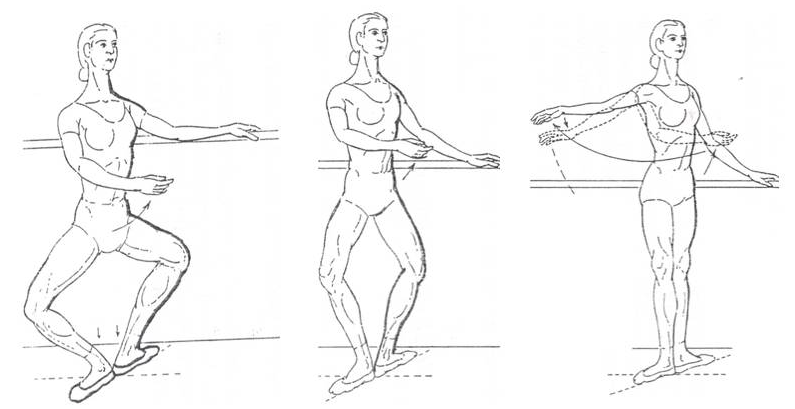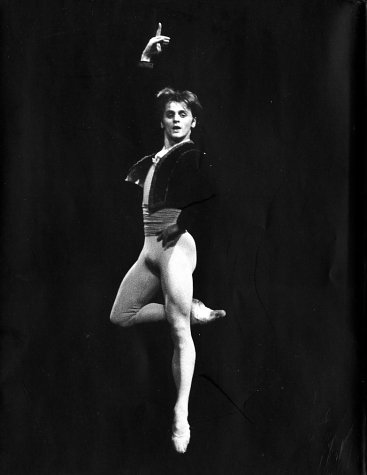As dancers jump and leap, they often
appear to do so effortlessly and seem to
float through the air. At first glance it
may seem as though they are breaking the
laws of physics, but they are simply using
physics to their advantage to create an
illusion. When an object, such as a ball,
is thrown it moves in a parabolic motion
with respect to its center of mass. When a
dancer leaps, their center of mass also
moves in a parabolic motion, but they can
move their center of mass with respect to
the rest of their body during the jump by
raising their legs into a split at the
height of the jump. As shown in the figure
to the right, at the beginning of the leap
their center of mass starts in their lower
abdominal and their head is at a certain
height. Then, by raising their legs, their
center of mass rises to a higher position,
but their head is at the same height.
Before landing, they lower their legs
first which in turn moves their center of
mass up, but keeps their head at the same
height. The effect this makes is that the
upper body seems to move strictly
horizontally for a few brief moments as if
the is dancer floating in the air.
In order to get good height in any jump or
leap, a dancer must first plie, which
means bend the legs as shown in the figure
to the right. The height that a dancer
will achieve during a jump is dependent on
the downward force they exert on the floor
and the length of time that this force is
applied. Therefore, by taking a deep plie
before a jump, a dancer can apply a
vertical force on the floor for a longer
period of time as their legs straighten
out that will in turn allow them to jump
higher.
|

Laws, K. (2002).

http://theclassicballet.blogspot.com/2010/12/movimientos-basicos-grand-plie.html
|





